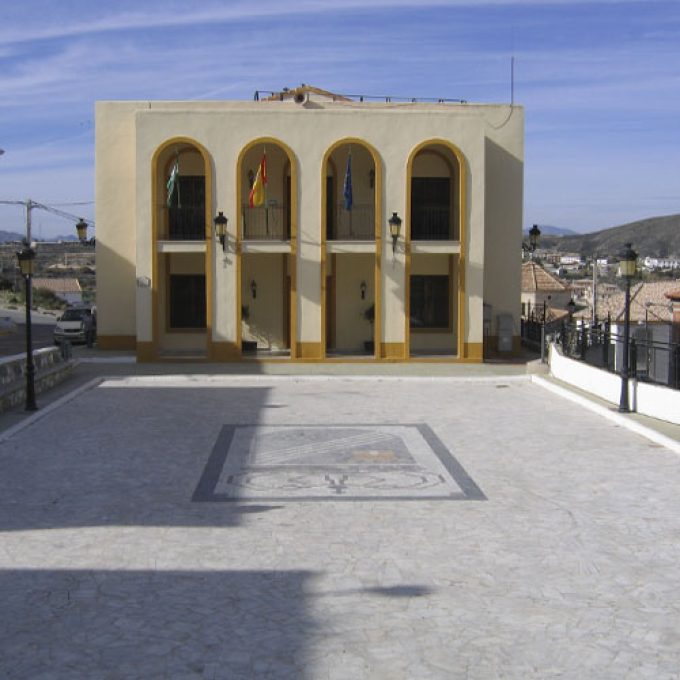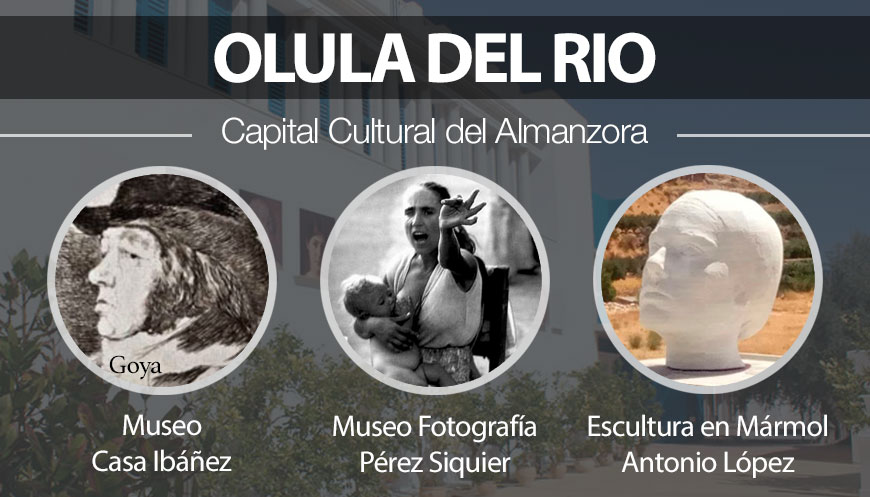History of Arboleas
The river that crosses it is a historical path, through which many of the peoples who come to the Peninsula accede.
For the archaeological remains, the settlements of population go back to the Neolithic and Bronze ages. From here, we find argáricos, Phoenician, Carthaginian and Roman remains. But it would be the Muslim stage that would leave the greatest vestiges, which have survived to this day in the form of popular architecture, gastronomy, habits, customs and uses. From the Muslim period, we highlight the writer Abu Ben Abdalacis Al-Arbulí, a native of Arboleas, of whom there is an interesting “Food Treaty” about food in Al-Andalus.
The conquest of the Valley of the Almanzora by the Catholic Monarchs in the year 1488 takes place, being given in señorío, along with Albox, Albanchez, and Benitagla, to the Duke of Nájera and happening later to the First Marquess of the Vélez.
During the rebellion of the Moriscos some battles were fought in the municipal area. After the war and decreed the expulsion of the Moors from the Kingdom of Granada, Arboleas is repopulated with 30 old Christians arrived from other peninsular kingdoms. The assets of the 70 Moors expelled are counted and distributed. The Moorish rebellion had in the Comarca one of its maximum exponents, of which parties such as the Moorish Games of Aben Humeya, in Purchena, are preserved. But the depression that followed this rebellion was not less and the Moriscos of Almanzora, as happened in the rest of the kingdom of Granada, were deprived of their property, expelled from their lands and distributed to Christian families from all over the world. Peninsula (all of which occurred at the end of the 16th century, once decreed by Philip II, the expulsion of the Moors in 1572)
The region is plunged into misery and depopulation, as the population coming from outside is unaware of the environment and its production techniques.
From the beginning of the XVII century a slow migratory current would move towards the interior of the Almanzora Valley, motivated by the dangerousness that sheltered the coast (due to Moorish ships expelled and others from North Africa) and the abundance of land to be plowed, which it would become a frank demographic expansion after 1718.
This growth slows down in the second half of the 18th century due to the locust epidemics that destroyed crops and earthquakes.
It would be already from century XIX when the population begins to recover, taking place a strong demographic expansion, motivated by the mining activity of Serón and Cuevas del Almanzora. But again the cholera epidemics of 1855, 1860 and 1885, together with the mining crises of the middle and end of the century and the periods of drought, caused the population to fall again.
From the XX the migratory currents follow one another, first towards South American countries and, from 1950 towards European countries.
Only at the end of the 20th century, a slight recovery of the population began to be detected due to the expansion of the extractive activity of marble and due to the application in the Region of the European Rural Development Plans.
Monuments
- Watchtower of Arboleas
- Pedro Gilabert Museum
- Mirador de Limaria
- Parish Church of Santiago
Watchtower of Arboleas
The Torre Vigía de Arboleas is located on the right bank of the Almanzora River. It dates from the 12th century (nazarí period), of small dimensions, with an octagonal floor, not sheltered from the town of Arboleas because of its small size but it did act as a watchtower. It is possible that it is a minaret of an existing mosque in Arboleas.
The Torre Vigía de Arboleas is characterized by smooth and simple walls, to one side has a small cistern attached to store rainwater. On the old tower an upper body has been attached with convexed boarded windows that constitute the only adornment.
The Torre Vigía de Arboleas, is one of those that were distributed along the entire course of the Almanzora River. Unlike the others, which are circular, it has an octagonal plan, which suggests that it could be rebuilt in the Muslim stage, because of its shape and color.
Pedro Gilabert Museum
Opened in 2003, the Pedro Gilabert Museum is dedicated to the great naïf artist Pedro Gilabert, born in Arboleas in 1915. The permanent collection consists of 142 sculptures carved in olive wood by the artist.
In addition to 2 permanent exhibition halls, the museum has an assembly hall and 2 traveling exhibition halls. Thanks to these facilities, the Pedro Gilabert Museum has an extensive program of temporary exhibitions throughout the year, serves as a stage for traveling exhibitions organized by other institutions and hosts different cultural activities of the municipality and the region.
Mirador de Limaria
The viewpoints are those balconies, like the Mirador de Limaria, in which today we look out to realize how big and beautiful is the power of nature, to delight us with such beautiful and impressive images, such as we can see from any viewpoint of the Almanzora Valley; these high places that we know today as viewpoints are nothing more than the vestige of other times.
Parish Church of Santiago
It receives the name of Santiago Apóstol, although the Pattern is San Roque. The Parochial Church of Santiago was built in the mid-nineteenth century by the architects López Rull and Ortiz de Villejos in the neoclassical style.
It has three oculos typical of Gothic architecture as well as its cover that presents arches inwards. Iron columns imitating marble are placed between the central nave and the side aisle. This detail shows features of modernity due to iron mines and the appearance of various local foundry industries.
Its dome is half orange that is placed on top of the transept, whose purpose is to give light to the Parochial Church of Santiago. In its altars, golden details typical of the Baroque are highlighted.
Gastronomy
“Gastronomy represents the culture of a people, based on dishes made with home-made products, with artisanal winemaking and rich oranges.”
Since the year 2000 and coinciding with the publication of the book: – “A Nazari treaty on food: Al-Kalam Ala L-Agdiya of Al-Arbulí”,
After the publication of the book, a conference is being organized, taking advantage of the rich cultural and gastronomic legacy that has passed down from generation to generation: “Al-Arbuli” Gastronomic Days (end of August, first of September): the program : -Technical Formations, -Cycle of Conferences about cultures about the three cultures and -Noche Andalusí.
“Andalusian cuisine, like that of other autonomous communities, is marked by the raw material of its territory: fruits, vegetables, legumes, fish, pork, poultry … From the different combinations of these elements, dishes emerged so traditional and known as gazpacho, cabbage stew, ajoblanco, migas, porra, ajo colorao, beans with ham, stews, rin-ran, porridge, Authentic delicacies especially attractive for many tourists who visit Andalusia. ” Regarding sweets we have mantecados, nougat, orange donuts, fried donuts, butter cakes …



Comments 0